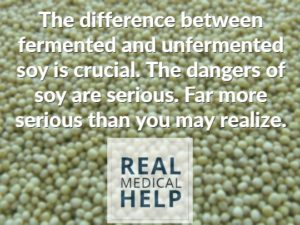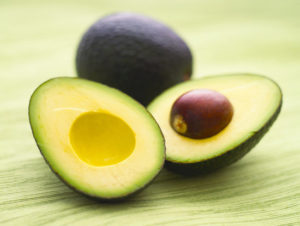
By now you may know about the wonderful probiotic benefits of kombucha, kefir and sauerkraut. But we bet you didn’t realize these everyday foods were good for your gut too!
https://www.foodmatters.com/article/5-foods-youd-never-expect-to-be-good-for-gut-health
30 Years of Breast Screening: 1.3 Million Wrongly Treated

The breast cancer industry’s holy grail (that mammography is the primary weapon in the war against breast cancer) has been disproved. In fact, mammography appears to have CREATED 1.3 million cases of breast cancer in the U.S. population that were not there.
A disturbing new study published in the New England Journal of Medicine is bringing mainstream attention to the possibility that mammography has caused far more harm than good in the millions of women who have employed it over the past 30 years as their primary strategy in the fight against breast cancer.[i]
Titled “Effect of Three Decades of Screening Mammography on Breast-Cancer Incidence,” researchers estimated that among women younger than 40 years of age, breast cancer was overdiagnosed, i.e. “tumors were detected on screening that would never have led to clinical symptoms,” in 1.3 million U.S. women over the past 30 years. In 2008, alone, “breast cancer was overdiagnosed in more than 70,000 women; this accounted for 31% of all breast cancers diagnosed.”
http://www.greenmedinfo.com/blog/30-years-breast-screening-13-million-wrongly-treated
Here’s a great exercise routine!
The Purpose of Food
As you know, food comes in a wide variety of tastes, colours, shapes and sizes, It also has an enormous variation in quality. And I’m not just talking fresh versus stale, I’m also talking about the quality of the nutrition and therefore nourishment that food provides our bodies.
At one end of the food quality scale, food can be natural (not genetically engineered), grown without herbicides, pesticides and fertilizer, contain no artificial preservatives, sweeteners, flavours and colours, no added sugar, no excitotoxins (like MSG, to make you crave more) and not be irradiated or washed in chlorine.
At the other end of the scale it can be genetically modified, artificially fertilised, doused in pesticides and herbicidal poisons, manufactured with artificial preservatives, sweeteners, flavours and colours, contain added sugar, excitotoxins (like MSG) and be irradiated or washed in chlorine. In other words, a toxic cocktail that contributes to degenerative diseases and an early death.
No wonder Jack LaLanne said, “If man made it, don’t eat it!”
(Francois Henri Jack LaLanne was an American fitness, exercise, and nutrition expert and motivational speaker who is sometimes referred to as the “Godfather of Fitness” and the “First Fitness Superhero”. He died at age 96.)
So, why is it that our food supply can cover such a wide variety of extremes. Purely and simply because we don’t all purchase only that which is good for us. That’s why companies make the stuff at the bad end of the scale. Because people buy it. If nobody bought it, companies would not make it.
So why do people buy it? Primarily because we are not all on the same page with regards to the definition and purpose of food.
For a moment, let’s have a look at the purpose for food. Why do we eat it? Right from the moment we are born, our bodies crave nourishment, we get hungry and look for something to eat to quell the pain of hunger. Mum offers us a nipple and away we go. So we start out by being suckers on the subject of food and the food giants expect us to remain so!
All jokes aside, this killing the pangs of hunger is the first purpose for eating. Unfortunately, for many around the world, it remains the only purpose.
As we grow a bit older we are introduced to things that taste nice. We are rewarded with food when we are “good”.
So food now assumes a new role. As well as taking away the pain of hunger, food is now something to eat that tastes great, so it is a source of pleasure, it makes us feel good.
Gee, we haven’t even got to school yet and we are seriously off the rails with regards to the purpose of food.
So then we introduce peer pressure on the subject of food, advertising aimed at kids, we get busy and don’t have time so we look for fast, easy and convenient, preprepared and “fast” foods. We are now easy targets for what the definition of food has become, “Something tasty that takes no time to prepare that I can eat quickly to not feel hungry and will get me through to the next meal time.”
Wow! What a degraded scene.
What’s the ideal scene? What would be the optimal purpose for eating? OK, food is fuel for the body. If we wanted the best condition for our body, what WOULD we want our food to do?
How about this? As well as the minimum purpose for food being:
1. To satisfy our hunger cravings
2. To taste at least acceptable
We additionally want to provide sufficient nutrients so:
3. Our body had sufficient energy so we could do what we wanted to do
4. We had no mental fog leaving us fresh and alert till an hour before sleep
5. The body would rarely, if ever get sick
6. If the body got ill, it would recover quickly
7. The body could repair itself and reverse disease
8. The body maintained as close to optimal functionality despite aging
If that is the proper purpose for food then as a society we have strayed a long way off the rails and have a long way to go to get back on the rails. The good news is that you and I have the power to make a change in our own diets and to encourage others to do the same.
The first step is to decide to take responsibility for your future diet and health. One way you can do that is to make a list of what you will cut out of your diet and another list of what you will add in or buy more of. I find one of the easiest ways to do that is to create an eating plan, meals and snacks, for the coming week then buy for that eating plan. And only go shopping on a full stomach! That’s a big help!
If you are looking for some options for snacks or “pick me ups” or mini-meals that are healthier than oats and sugar bars, check out www.healthelicious.com.au. I practice what I preach!
Are Cochrane Reviews Truly "Independent and Transparent"?

Criticisms of Cochrane reviews have surfaced since not long after the organization’s inception. In 2001, for example, the British Medical Journal (BMJ) questioned the reliability of some Cochrane reviews, describing the implications for Cochrane’s reputation as “serious.” The BMJ authors suggested that “the Cochrane Collaboration needs to clarify [explain] how it discharges its responsibilities for the quality of reviews published under its imprimatur, and how it responds when they are shown to have come to unjustified conclusions.”
A more recent examination of Cochrane reviews in 2016 concluded that while “the methodological quality of Cochrane reviews is good compared to…non-Cochrane reviews, …it would be inappropriate to assume all Cochrane reviews are good quality and are at low risk of bias.” Cochrane’s new and chummy partnership with Wikipedia to include “relevant evidence within all Wikipedia health articles,” announced in early 2017, also may raise some eyebrows given Wikipedia’s reputation for bias. All of these factors suggest that it might be time to take Cochrane’s supposedly neutral relationship with its funders with a grain of salt.
http://www.greenmedinfo.com/blog/are-cochrane-reviews-truly-independent-and-transparent
5 Fake Science Sources and How They Could Lead to Your Harm

Through a lack of education many continue to be deceived into believing the corporate/banker sponsored fake science. The spin is made by paid off crooked scientific establishments, phony front men and tightly controlled mainstream media outlets for the ulterior motives, control and profit.
https://www.newparadigm.ws/articles/5-fake-science-sources-and-how-they-could-lead-to-your-harm/
Should You Worry With The Dangers of Soy?

I received this newsletter and thought it well worth passing on to you.
Dear Tom,
Reduce, reuse, and recycle. It’s something we all try to do. Being conscious of the environment and the world you live in is almost second nature to many of us as being conscious of your health and your body.
You drop your paper and plastic into the recycling bin. Those with gardens compost the green leftovers from their kitchen. You frequently consume remanufactured industrial waste as part of what you assume to be a healthy diet.
Wait…what? You didn’t see that on the label?
No, you didn’t…because it isn’t there.
The proteins of the very first plant listed in the US Food and Drug Administration’s (FDA) Poisonous Plant Database is one that is referenced 288 times in that single document.
In fact, subsidized by the government, it is used as a food additive more than any other ingredient. This is despite the fact that the FDA refused to grant it “Generally Recognized as Safe” status.
The plant we’re talking about is the soybean.
Hold on a second! Soy is supposed to be good for you! People in Asian cultures have been eating it for thousands of years and it’s been proven to benefit their health. Right?
Not exactly. Research shows that soy products consumed in many Asian diets – such as tempeh, miso, soy sauce, and Kombucha tea – use fermented soy in production.
The majority of soy products sold in the United States – such as soymilk, tofu, burgers, and cheese – use unfermented soy in manufacturing.
The difference between fermented and unfermented soy is crucial. The dangers of soy are serious. Far more serious than you may realize.1
Let’s begin with the point many people are introduced to soy: soon after birth. On average, 12% of American children consume a baby formula containing soy. It’s dropped more than 50% in the last decade now that the word is out on soy (this is good news).2
What the label on those cans neglects to mention (even now) is that the product contains phytoestrogens. These are plant-based compounds that mimic the estrogen produced by the human body. A child fed soy-based formula is consuming something that mimics birth control.
Infants on soy-based formulas experienced changes to their reproductive system tissues.3
Have you looked at children and young adults recently? Do you notice how much faster they’re developing? Research proves that early onset puberty has increased in the last two decades. It is not surprising considering the massive bombardment of hormones children receive from birth.
The results are staggering.
Those phytoestrogens? They’re not just in baby formula and they do a lot more than simply cause your kids to develop quicker. Increased estrogen levels in the body lead to infertility, uterine fibroids, and breast cancer. A separate study indicated that drinking just two glasses of soymilk a day can alter your menstrual cycle.4
Goitrogens in unfermented soy block synthesis of thyroid hormones, which can lead to hyperthyroidism and thyroid cancer. They also interfere with iodine metabolism and have been linked to autoimmune thyroid disease.
What other surprises lurk in our soy lattes?
Aluminum – soy foods contain high levels of this toxic metal, which causes damage to your kidneys and central nervous system.
Vitamins B12 – unfermented soy contains a compound resembling vitamin B12 that your body cannot use. It increases your need for vitamin D. As a result, synthetic forms of both vitamins are added to the soy foods you consume.
MSG – commonly added to packaged foods to enhance their taste, this potent neurotoxin is a byproduct of soy food processing. Additional MSG is added later to cover the unpleasant flavor of soy. MSG causes weight gain, promotes liver inflammation, and is linked to instances of brain cell damage.
Hemagglutinin – you may not have heard of hemagglutinin, but its presence is nothing to ignore. It causes your red blood cells to clump together, leaving them unable to properly absorb and distribute oxygen throughout your body.
Lysin alanine and Nitrosamines – these toxic and carcinogenic compounds are formed during the high-temperature chemical processing of soy. To create textured vegetable protein – it is the only method used. Textured vegetable protein sounds rather safe if you read it on a label.
Every year, the numbers of allergic reactions to soy continues to grow. Since soy is used as an additive and filler in so many processed and pre-packaged foods, manufacturers are required by law to list all soy used in production.
This allergy is so severe that a single bite of soy could literally be the last thing they ever eat.
Experts estimate that more than 90% of soy used in food manufacturing is genetically modified (GMO) – which adds another layer of risk to consuming soy. The risks simply aren’t worth it when it comes to the dangers of soy. Be healthy and make the safe choice.
To Your Health & Longevity,
David Allen
President,
Medical Research Associates
Breakthroughs in Health & Medicine
https://realmedicalhelp.com/newsletter/2018/06.09.18-InHouse-MRA-News.html
The Empire Strikes Back: Leaving Indian Farmers in the Dirt
This article by Colin Todhunter may have been written about India and some of the data and quotes specific only to the sub-continent but if you talk to some Aussie farmers I am certain you will find enough of a common thread to realise that this is a global phenomenon, one that should be countered by you and I buying local, organic produce. That option is better for our health, better for the soil, better for the farmers and better for the economy.
The Empire Strikes Back: Leaving Indian Farmers in the Dirt
by Colin Todhunter June 5, 2018
By 2050, if current policies continue, India could have numerous mega-cities with up to 30-40 million inhabitants and just two to three hundred million people (perhaps 15-20% of the population) left in an emptied-out countryside. Given current trends in the job market, it could mean tens of millions of city-based rural migrants without much work: victims of the ill thought out policies we currently see being pushed through.
In the book ‘The Invention of Capitalism’, Michael Perelmen lays bare the iron fist which whipped the English peasantry into a workforce willing to accept factory wage labour. English peasants didn’t want to give up their rural communal lifestyle, leave their land and go work for below-subsistence wages in dangerous factories being set up by a new class of industrial capitalists. A series of laws and measures served to force peasants off the land and deprive them of their productive means.
In India, what we are currently witnessing is a headlong rush to facilitate (foreign) capital and the running down of the existing system of agriculture. While India’s farmers suffer as the sector is deliberately being made financially non-viable for them, we see state-of-the-art airports, IT parks and highways being built to allow the corporate world to spread its tentacles everywhere to the point that every aspect of culture, infrastructure and economic activity is commodified for corporate profit.
GDP growth – the holy grail of ‘development’ which stems from an outmoded thinking and has done so much damage to the environment – has been fuelled on the back of cheap food and the subsequent impoverishment of farmers. The gap between their income and the rest of the population, including public sector workers, has widened enormously to the point where rural India consumes less calories than it did 40 years ago. Meanwhile, corporations receive massive handouts and interest-free loans but have failed to spur job creation; yet any proposed financial injections (or loan waivers) for agriculture (which would pale into insignificance compared to corporate subsidies/written off loans) are depicted as a drain on the economy.
Let them eat dirt
Although farmers continue to produce bumper harvests, they are being put out of business by underinvestment, the lack of a secure income and support prices, exposure to artificially cheap imports, neoliberal reforms, profiteering companies which supply seeds and proprietary inputs and the overall impacts of the corporate-backed Indo-US Knowledge Initiative on Agriculture.
For all the talk of ‘helping’ farmers, the plan is to displace the existing system of livelihood-sustaining smallholder agriculture with one dominated from seed to plate by transnational agribusiness and retail concerns. To facilitate this, independent cultivators are being bankrupted, land is to be amalgamated to facilitate large-scale industrial cultivation and those farmers that are left will be absorbed into corporate supply chains and squeezed as they work on contracts, the terms of which will be dictated by large agribusiness and chain retailers.
Some like to call this adopting a market-based approach: a system in the ‘market-driven’ US that receives a taxpayer five-year farm bill subsidy of around $500 billion.
This clearly a con-trick and not the way forward:
“If government can be convinced or forced by the power of the global grassroots to reduce and eventually cut off these $500 billion in annual subsidies to industrial agriculture and Big Food, and instead encourage and reward family farmers and ranchers who improve soil health, biodiversity, animal health and food quality, we can simultaneously reduce global poverty, improve public health, and restore climate stability.” Ronnie Cummins, director of the Organic Consumers Association
Well over 300,000 Indian farmers have taken their lives since 1997 and millions more are experiencing economic distress. Over 6,000 are leaving the sector each day. And yet the corporate-controlled type of agriculture being imposed and/or envisaged only leads to degraded soil, less diverse and nutrient-deficient diets, polluted water, water shortages and poor health.
Although various high-level reports (as I outlined previously) have concluded that policies need to support more resilient, diverse, sustainable (smallholder) agroecological methods of farming and develop decentralised, locally-based food economies, the trend continues to move in the opposite direction towards industrial-scale agriculture and centralised chains for the benefit of Monsanto, Cargill, Bayer and other transnational players.
The plan is to shift hundreds of millions from the countryside and into the cities to serve as a cheap army of labour for offshored foreign companies, mirroring what China has become: a US colonial outpost for manufacturing that has boosted corporate profits at the expense of US jobs. In India, rural migrants are to become the new ‘serfs’ of the informal services and construction sectors or to be trained for low-level industrial jobs.
Even here, however, India might have missed the boat as jobless ‘growth’ seems to be on the horizon and the effects of automation and artificial intelligence are eradicating the need for human labour across many sectors.
If we look at the various western powers, to whom many of India’s top politicians look to for inspiration, their paths to economic prosperity occurred on the back of colonialism and imperialist intent. Do India’s politicians think this mindset has disappeared? The same mentality now lurks behind the neoliberal globalisation agenda hidden behind terms and policies like ‘foreign direct investment’, ‘ease of doing business’, making India ‘business friendly’ or ‘enabling the business of agriculture’.
Behind the World Bank/corporate-inspired rhetoric that is driving the overhaul of Indian agriculture is a brand of corporate imperialism which is turning out to be no less brutal for Indian farmers than early industrial capitalism was in England for its peasantry. The East India company might have gone, but today the bidding of elite interests (private capital) is being carried out by compliant politicians, the World Bank, the WTO and lop-sided, egregious back-room trade deals.
And all for a future of what – vast swathes of chemically-drenched monocrop fields containing genetically modified plants or soils rapidly turning into a chemical cocktail of proprietary biocides, dirt and dust?
Thanks to the model of agriculture being supported and advocated, India will edge nearer to having more drought vulnerable regions, even more degraded soils (which a is already a major problem) as well as spiralling rates of illness throughout the population due to bad diets, denutrified food, agrochemical poisoning and processed food laced with toxic ingredients.
Monsanto-Bayer, Cargill and other transnational corporations will decide on what is to be eaten and how it is to be produced and processed. A corporate takeover spearheaded by companies whose character is clear for all to see:
“The Indo-US Knowledge Initiative in Agriculture with agribusinesses like Monsanto, WalMart, Archer Daniels Midland, Cargill and ITC in its Board made efforts to turn the direction of agricultural research and policy in such a manner as to cater their demands for profit maximisation. Companies like Monsanto during the Vietnam War produced tonnes and tonnes of ‘Agent Orange’ unmindful of its consequences for Vietnamese people as it raked in super profits and that character remains.” – Communist Party of India (Marxist)
Regional Comprehensive Economic Partnership
The Regional Comprehensive Economic Partnership (RCEP) could accelerate this process. A trade deal now being negotiated by 16 countries across Asia-Pacific, the RCEP would cover half the world’s population, including 420 million small family farms that produce 80% of the region’s food.
RCEP is expected to create powerful rights an lucrative business opportunities for food and agriculture corporations under the guise of boosting trade and investment. It could allow foreign corporations to buy up land, thereby driving up land prices, fuelling speculation and pushing small farmers out. If RCEP is adopted, it could intensify the great land grab that has been taking place in India. It could also lead to further corporate control over seeds.
The dairy trade could be opened up to unfair competition from subsidised imports under RCEP. According to RS Sodhi, managing director of the country’s largest milk cooperative, Gujarat Co-operative Milk Marketing Federation, the type of deals being pushed under the banner of ‘free trade’ will rob the vibrant domestic dairy industry and the millions of farmers that are connected to it from access to a growing market in India.
India’s dairy sector is mostly self-sufficient and employs about 100 million people, the majority of whom are women. The sector is a lifeline for small and marginal farmers, landless poor and a significant source of income for millions of families. Up until now they have been the backbone of India’s dairy sector. New Zealand’s dairy giant Fonterra (the world’s biggest dairy exporter) is looking to RCEP as a way in to India’s massive dairy market. RCEP would give the company important leverage to open up India’s protected market. Many fear that Indian dairy farmers will either have to work for Fonterra or go out of business.
In effect, RCEP would dovetail with existing trends that are facilitating the growth of chemical-intensive farming and corporate-controlled supply chains, whereby farmers can easily become enslaved or small farmers simply get by-passed by powerful corporations demanding industrial-scale production.
RCEP also demands the liberalisation of the retail sector and is attempting to facilitate the entry of foreign agroprocessing and retail giants, which could threaten the livelihoods of small retailers and street vendors. The entry of retail giants would be bad for farmers because they may eventually monopolise the whole food chain from procurement to distribution. In effect, farmers will be at the mercy of such large companies as they will have the power to set prices and will not be interested in buying small quantities from small producers.
Corporate concentration will deprive hundreds of millions of their livelihoods. RCEP is a recipe for undermining biodiverse food production, food sovereignty and food security for the mass of the population. It will also massive job losses in a country like India, which has no capacity for absorbing such losses into its workforce.
Current policies seek to tie agriculture to an environmentally destructive, moribund system of capitalism. RCEP would represent a further shift away from real, practical solutions to India’s agrarian crisis based on sustainable agriculture and which place the small farmer at the centre of the development paradigm. Once you begin to consolidate land, displace the small-scale farm and amalgamate land into larger parcels for industrial-scale agriculture, you implement a more inefficient model of agriculture and undermine food security.
In a future India, people might eventually ask, why did India let this happen when far-sighted and sustained policy initiatives based on self-sufficiency, food sovereignty, smallholder-based regenerative agriculture and agroecology could have been implemented?
They might also ask why was the countryside emptied out and more effort not put into developing rural infrastructure and investing in village-based industries and smallholder farmers?
And not least of all, they might ask why did policy makers buy into neoliberal dogma, the only role of which is to seek to justify a corporate takeover?
Ultimately, it is a case of asking does India want – does any country want – industrial-scale agriculture and all it entails: denutrified food, increasingly monolithic diets, the massive use of agrochemicals, food contaminated by hormones, steroids, antibiotics and a range of chemical additives, spiralling rates of ill health, degraded soil, contaminated and depleted water supplies and a cartel of seed, chemical and food processing companies that seek to secure control over the global food production and supply chain to provide people with low-grade but highly profitable food products.
Solutions to India’s agrarian crisis (and indeed the worlds) are available, not least the scaling up of agroecological approaches which would be a lynchpin of rural development. However, in India (as elsewhere) successive administrations have bowed to and continue to acquiesce to grip of global capitalism and have demonstrated an unflinching allegiance to corporate power. It is unlikely that either the Congress or BJP, wedded as they are to neoliberalism, will ever undertake initiatives for seriously developing agroecological alternatives:
“But even if for argument’s sake… the present governance structure were to embrace agroecological alternatives, the problem of extreme inequality that results from the structural logic of capitalism… would require mitigation. Without tempering the ravages of the market, hunger will continue, as will the disempowerment of small producers. Indeed, an agroecological alternative would simply be co-opted by capitalist relations of production and distribution, with community-based initiatives becoming mere decentralised production points within a supply-chain logic that centralises power and profits in the hands of seed corporations.” – Milind Wani.
Colin Todhunter is an extensively published independent writer and former social policy researcher based in the UK and India.
https://www.counterpunch.org/2018/06/05/the-empire-strikes-back-leaving-indian-farmers-in-the-dirt/
WHAT MOST PEOPLE CALL “CHEMTRAILS” COULD KILL TENS OF THOUSANDS OF PEOPLE, SAYS HARVARD PROFESSOR

What is geoengineering? It’s the large scale intervention and manipulation of the global climate system through various means, the most popular seems to be spraying reflective substances into the air via aircraft or balloons in order to reflect the sunlight back into space.
http://www.collective-evolution.com/2018/05/10/what-most-people-call-chemtrails-could-kill-tens-of-thousands-of-people-says-harvard-professor/
This Fatty Food Promotes A Healthy Heart And Waistline?

The myth persists that high fat foods gunk up your arteries and pad your hips. But it’s just not true especially when it comes to the highest fat fruit on the planet – the avocado (Persea americana).
http://www.greenmedinfo.com/blog/fatty-food-promotes-healthy-heart-and-waistline

